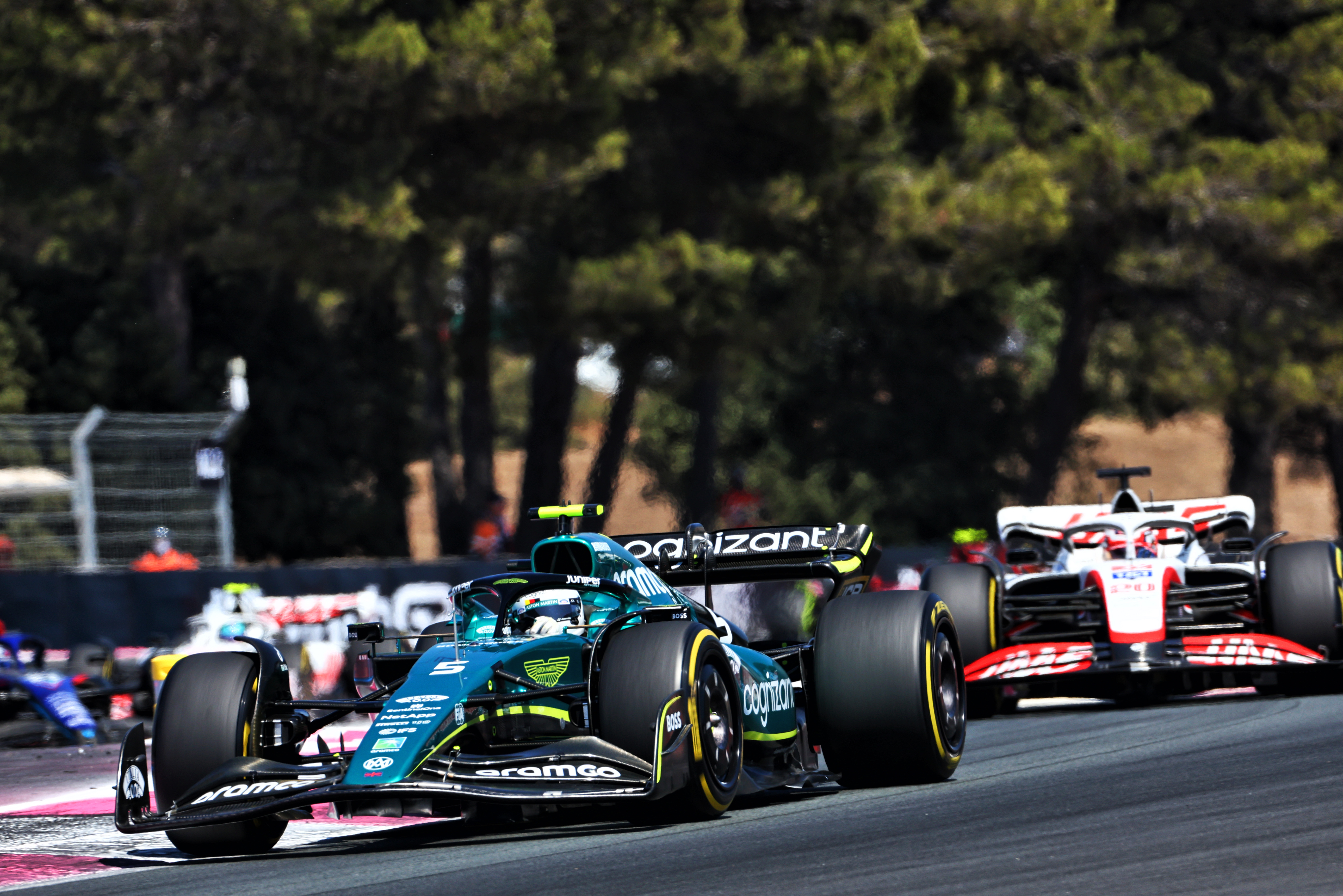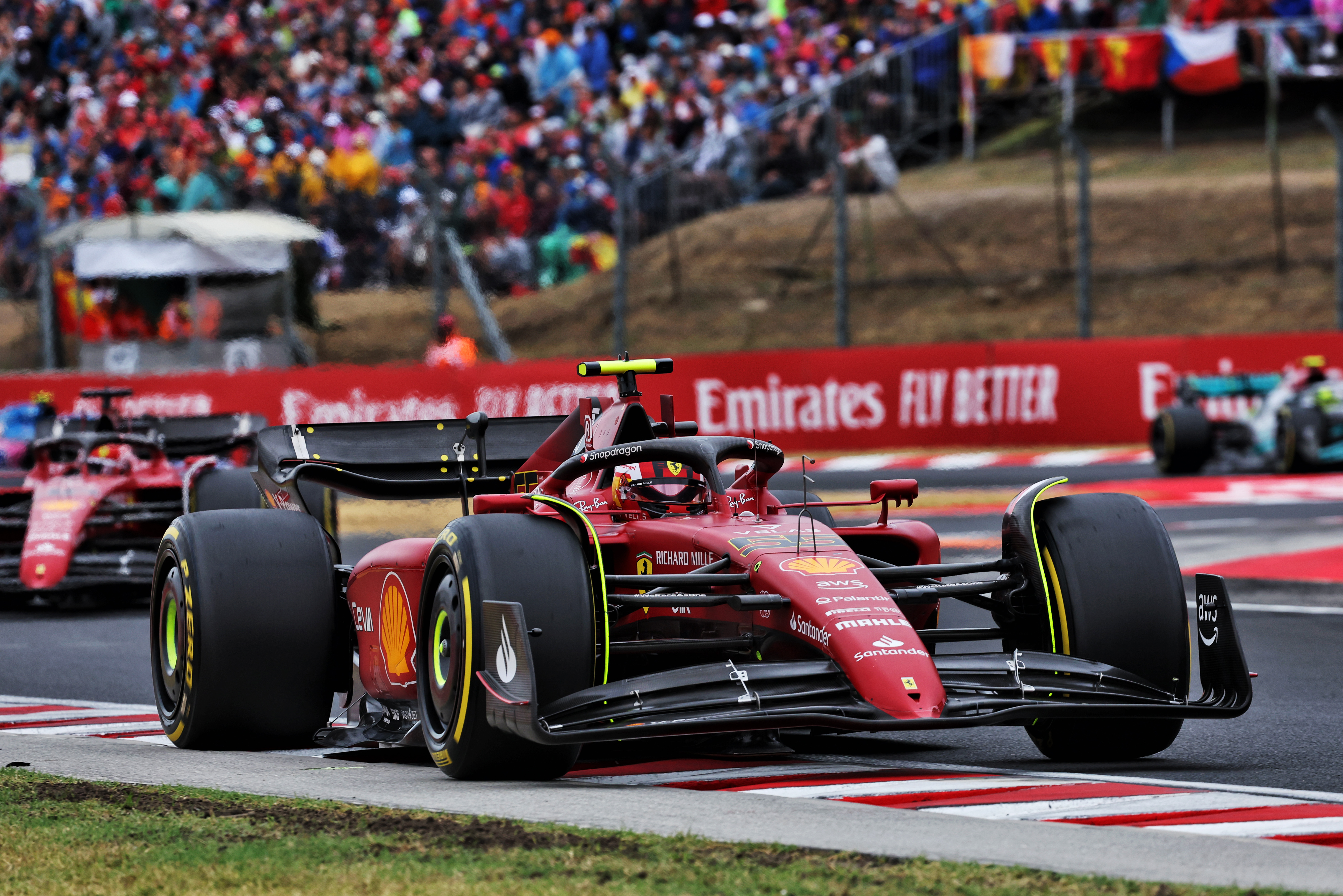Up Next

Thirteen races down, nine to go and on face value of the points table it appears the 2022 Formula 1 season is heading in Max Verstappen and Red Bull’s direction. But how big an opportunity has Ferrari missed and, more importantly, is there time to pull it back?
Over the first half of the season, it really has been nip and tuck between Red Bull and a fully reinvigorated Ferrari. Both have had a few reliability problems, but Ferrari is the team that has tripped over itself constantly. The battle between Max Verstappen and Charles Leclerc is all about who gets it right on a given weekend, but as a team Ferrari has made it tough for the Monegasque youngster.
Red Bull has gone about its business in its normal, professional way and left no stone unturned. There have been retirements, notably the fuel cavitation problem that put both cars out in Bahrain and Verstappen’s damaged fuel line in Australia, but the RB18 has been a car for all circuits. But in terms of out-and-out car performance, Ferrari is right up there and has more often than not had the edge with eight out of 13 pole positions.
Let’s take a close look at the data. The ‘supertimes’ method takes each team’s fastest single lap of every weekend calculated as a percentage of the outright quickest then averaged out over the season. This means each of the 13 events is equally weighted, with 100.000% the best-possible average but only in the unlikely event one team was fastest every weekend. Also included is each team’s best and worst performance, with the delta between them.
Supertimes 2022
| Team | Average (%) | Best (%) | Worst (%) | Delta (%) |
| Ferrari | 100.070 | 100.000 | 100.508 | 0.508 |
| Red Bull | 100.194 | 100.000 | 100.421 | 0.421 |
| Mercedes | 100.893 | 100.000 | 101.335 | 1.335 |
| Alpine | 101.331 | 100.561 | 101.849 | 1.288 |
| McLaren | 101.335 | 100.507 | 102.071 | 1.564 |
| Alfa Romeo | 101.601 | 100.765 | 102.386 | 1.621 |
| AlphaTauri | 101.773 | 101.007 | 102.467 | 1.460 |
| Haas | 101.800 | 100.705 | 103.240 | 2.535 |
| Aston Martin | 102.127 | 100.425 | 103.531 | 3.106 |
| Williams | 102.716 | 101.917 | 103.584 | 1.667 |
Obviously, the objective is to be as far up this chart as possible, but you need the tools to do that. As a race team, all you can do is extract the maximum potential every weekend from the package that you are given. The delta column is an important reflection of how successful you have been in doing that.
Minimising the randomness here means that if one day your design group produces a fast car then your race team will know what to do with it. Yes, it can just be down to one bad weekend compared with one good weekend, but it shows Aston Martin and Haas in particular need to concentrate on this consistency.

But we can also bring some extra data into this analysis. There have been 10 dry and three wet qualifying sessions this year, with Imola, Canada and Britain the ones affected by the rain.
For this next set of data, only the times from Q1 are used. That’s because we know that all 20 cars are out and running at more or less the same time and in identical track conditions. As the track gets more rubbered in through qualifying it can skew the data and make the cars that reach Q3 look much more competitive than those that get eliminated in Q1 or Q2.
Of course, the fastest cars will also not necessarily have pushed as hard or even completed two runs in Q1, but any set of data is imperfect and this still produces some interesting figures.
Q1 supertimes 2022
| Team | Dry average (%) | Wet average (%) | Delta (%) |
| Ferrari | 100.060 | 100.444 (2) | +0.384 (2) |
| Red Bull | 100.272 | 100.211 (1) | -0.062 (1) |
| Mercedes | 100.806 | 101.314 (3) | +0.508 (5) |
| Alpine | 100.975 | 101.444 (4) | +0.469 (4) |
| McLaren | 100.982 | 101.816 (6) | +0.834 (7) |
| Alfa Romeo | 101.050 | 101.485 (5) | +1.278 (10) |
| AlphaTauri | 101.111 | 102.389 (8) | +0.435 (3) |
| Haas | 101.125 | 101.857 (7) | +0.732 (6) |
| Aston Martin | 101.523 | 102.672 (9) | +1.149 (8) |
| Williams | 101.746 | 102.968 (10) | +1.222 (9) |
The first column above is more representative of true dry-weather car performance. Yes, the teams at the back throw everything they have got at it to try to progress, while those at the front are probably a bit more reserved. But even so, it does show that the guys at the back are still doing an impressive job.
The second column shows each team’s performance in the wet, with their position in brackets. Red Bull is the only team that improves in wet conditions compared to the others, so it shows its car – or at least the team’s understanding of it when it comes to optimising it around wet conditions – is pretty sound.
The third column is the difference. I’m surprised that the Mercedes drop off is quite as large as it is. Its bouncing and porpoising problems should be reduced using the larger-diameter rear wet tyres and its drivers are normally right up there in those sort of conditions.
Perhaps this column simply shows how some of the cars, including the Mercedes, need to be run with a very stiff suspension set-up to reduce the porpoising. That has never been a good thing in the wet.
Analysing performance pace against race pace is more difficult thanks to the number of variables at play. To compare outright performance against race performance, I have created our very own ‘first F1 car past the post’ championship.
It awards points as the current championship system of 25 for fastest down to one for slowest based on performance. So from this we can compare the fastest lap from Q1, when the objective for everyone is fairly similar (first column) against the same points awarded based on the first car from each team to get to the chequered flag in the race.
First past the post 2022 points
| Team | Q1 supertimes | Lead car in race | Delta |
| Mercedes | 157 | 210 | 53 |
| Red Bull | 251 | 280 | 29 |
| Aston Martin | 49 | 76 | 27 |
| Williams | 22 | 43 | 21 |
| AlphaTauri | 71 | 78 | 7 |
| Alpine | 135 | 131 | -4 |
| McLaren | 121 | 114 | -7 |
| Alfa Romeo | 116 | 97 | -19 |
| Haas | 104 | 56 | -48 |
| Ferrari | 287 | 228 | -59 |
You might have the fastest car, but race day is pay day and for Ferrari to boldly go into each race weekend taking no notice of what has happened that cost them considerable points over the previous races is a pretty dumb thing to do.
Statements about it being all down to performance and not race strategy and reliability make no sense to me.

Ferrari has to realise what is obvious, that while it has won four races this year it has been the biggest underachiever of the season based on car pace compared to race results. If it’s ever to win a championship again, that needs to change and change quickly.
It has nine races to show its understanding of how best to execute a race weekend and try to pull at least some championship points back. Otherwise, I’m afraid heads are going to be on the chopping block in Maranello.




